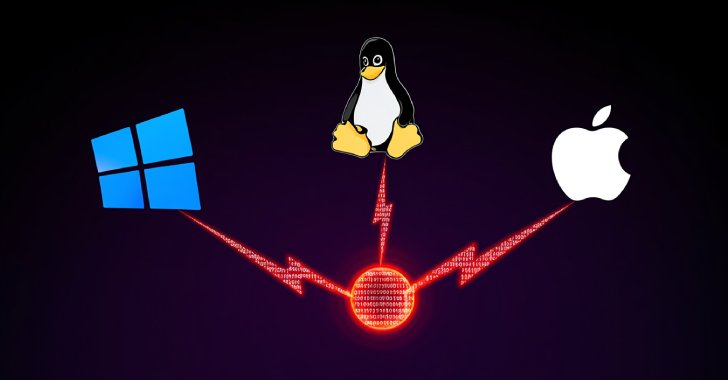Top Highlights
-
CrossC2 Framework: Japan’s CERT reported the use of CrossC2, a command-and-control framework extending Cobalt Strike’s capabilities to Linux and macOS, detected in attacks from September to December 2024 across multiple countries.
-
Custom Malware Loader: Investigations revealed a bespoke loader named ReadNimeLoader, which employs anti-debugging techniques and executes the payload without leaving traces by exploiting the legitimate java.exe binary.
-
Ransomware Connection: The attack campaign exhibited overlaps with known BlackSuit/Black Basta ransomware activities, utilizing similar command-and-control domains and file names.
- Vulnerability of Linux Servers: Many Linux servers lack endpoint detection and response systems, making them vulnerable entry points for attackers, necessitating heightened security measures in these environments.
What’s the Problem?
On August 14, 2025, Japan’s Computer Emergency Response Team Coordination Center (JPCERT/CC) disclosed alarming breaches involving a command-and-control (C2) framework known as CrossC2. This sophisticated tool extends the capabilities of Cobalt Strike, a well-known penetration testing suite, to various platforms, including Linux and macOS. JPCERT/CC’s investigation, covering incidents from September to December 2024, revealed that attackers targeted multiple nations, including Japan, utilizing custom-built malware dubbed ReadNimeLoader to sideload malicious payloads onto compromised systems.
The threat actor employed a combination of tactics and tools—including PsExec, Plink, and Cobalt Strike—specifically aiming at Active Directory penetration. The decoy mechanism involved executing a legitimate Java binary to trigger the ReadNimeLoader, which was designed to obfuscate its operations through advanced anti-debugging techniques. Notably, these attacks showed parallels to previously reported BlackSuit/Black Basta ransomware activities, with shared infrastructure and malicious tactics. This underscores a critical vulnerability in Linux servers, particularly as many lack endpoint detection and response systems, thereby serving as potential gateways for further compromises, as asserted by JPCERT/CC researcher Yuma Masubuchi.
Critical Concerns
The emergence of CrossC2, a command-and-control framework designed for cross-platform deployment, poses significant risks not only to the targeted systems but also to a broader network of businesses, users, and organizations that may inadvertently become collateral damage. As sophisticated malware such as ReadNimeLoader and associated Cobalt Strike functionalities infiltrate systems, compromised nodes can act as springboards for lateral movement into interconnected networks, amplifying the threat landscape. The potential infiltration of Linux servers—often lacking robust endpoint detection and response (EDR) measures—exacerbates vulnerabilities, allowing for exponentially greater data breaches and ransomware deployment across industries. Consequently, even businesses without direct exposure to the original attack may find their operations jeopardized or obliterated through these cascading security failures, ultimately undermining trust, operational integrity, and financial stability across the affected digital ecosystem.
Fix & Mitigation
The ever-evolving landscape of cyber threats, epitomized by the recent exploitation of CrossC2 to augment the Cobalt Strike Beacon’s penetration into Linux and macOS ecosystems, underscores the urgent necessity for timely remediation measures. Rapid response can mitigate potential damages and preserve system integrity.
Mitigation Measures
- Patch Management: Regularly update all systems to close vulnerabilities.
- Intrusion Detection: Implement advanced monitoring for anomalous network traffic.
- Access Controls: Strengthen account permissions, enforcing the principle of least privilege.
- Network Segmentation: Limit lateral movement through segmented network architecture.
- Threat Intelligence: Leverage threat feeds for real-time insights and proactive defense.
- User Education: Conduct training sessions on recognizing phishing attempts and suspicious behavior.
- Incident Response Plan: Develop and regularly test a robust incident response framework.
NIST Guidance
The NIST Cybersecurity Framework (CSF) advocates for a proactive approach to risk management, emphasizing the need to identify, protect, detect, respond, and recover from cyber incidents. For further guidance, consult NIST Special Publication 800-53, which delineates security and privacy controls tailored for safeguarding organizational operations against such threats.
Explore More Security Insights
Explore career growth and education via Careers & Learning, or dive into Compliance essentials.
Understand foundational security frameworks via NIST CSF on Wikipedia.
Disclaimer: The information provided may not always be accurate or up to date. Please do your own research, as the cybersecurity landscape evolves rapidly. Intended for secondary references purposes only.
Cyberattacks-V1

